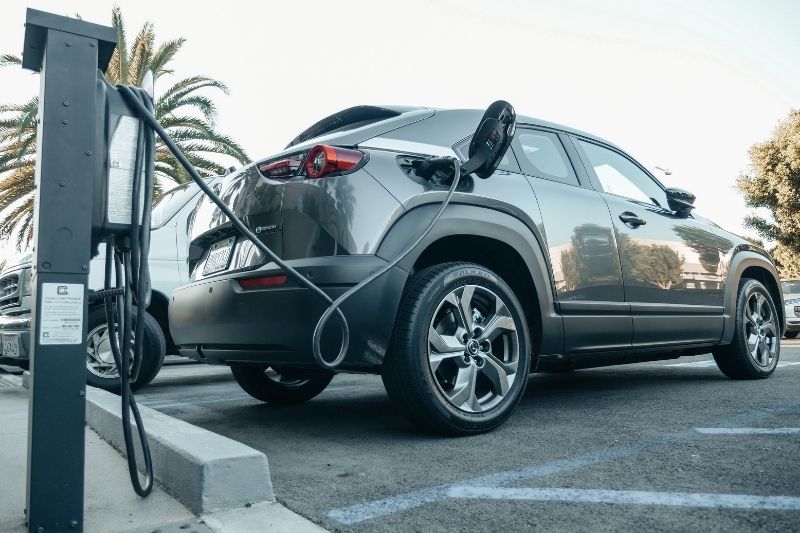Electric Car Charging Guide: The Dos and Don’ts

As the world transitions to sustainable transportation, electric vehicles (EVs) have emerged as a promising solution to reduce carbon emissions and combat climate change. Electric cars offer cleaner and more efficient mobility, but their convenience is tightly coupled with the availability and responsible usage of electric vehicle charging stations. In this comprehensive electric car charging guide, we explore the essential “Dos and Don’ts” that every EV owner, enthusiast, and eco-conscious citizen should adhere to for a seamless charging experience.
Charging an electric vehicle may seem straightforward, but there’s an unspoken code of etiquette that ensures that everyone can access charging stations and the charging process is efficient and safe. Whether you’re a seasoned EV driver or just embarking on your electric journey, understanding these guidelines is crucial to promote good charging behavior, maintain infrastructure, and, ultimately, drive the adoption of electric vehicles forward.
Dos of Electric Car Charging
Best practices for electric car charging etiquette is crucial for ensuring a positive charging experience, both for you and other EV owners. Adhering to these “Dos” can help promote a culture of courtesy and responsibility within the EV community. Here are some key guidelines for responsible and efficient charging:
1. Proper Charging Station Etiquette
Respecting Station Availability: It’s essential to be mindful of the availability of charging stations. Don’t occupy a charging spot longer than necessary, and move your EV once it’s fully charged to free up the space for others.
Adhering to Time Limits: Some charging stations have time limits, and it’s important to follow them. Overstaying can inconvenience other EV owners in need of a charge.
2. Charging Cable Care
Handling and Storing Cables Correctly: Treat charging cables with care. Avoid bending or damaging the cables, as they are essential for charging your EV. Store them properly to prevent wear and tear.
Ensuring Safety During Charging: When plugging and unplugging your EV, ensure that the charging area is clear of obstacles and that the cable connections are secure. Safety is paramount.
3. Sustainable Charging
Maximizing Renewable Energy Use: Whenever possible, charge your EV with renewable energy sources like solar or wind power to reduce your carbon footprint.
Off-Peak Charging Benefits: Take advantage of off-peak charging hours when electricity demand is lower. This not only saves you money but also helps balance the grid and reduce strain on energy resources.
Don’ts of Electric Car Charging
Responsible electric car charging goes beyond what you should do—it also involves understanding and avoiding common pitfalls and inconsiderate behaviors. Here are some “Don’ts” that electric vehicle (EV) owners should be aware of:
1. ICEing (Internal Combustion Engine Blocking)
Explaining the Issue and Consequences: Don’t park your non-electric vehicle in an EV charging spot, a practice known as ICEing. This blocks EV owners from accessing charging stations and can lead to frustration and inconvenience.
Ways to Prevent ICEing: If you don’t drive an electric vehicle, ensure you park in designated spots for internal combustion engine (ICE) vehicles to keep charging stations available for those who need them.
2. Misuse of Charging Equipment
Prohibiting Non-Electric Vehicles: Do not allow non-electric vehicles to use charging stations. These stations are specifically designed for EVs, and misuse can lead to wear and damage to the charging infrastructure.
Preventing Vandalism and Misuse: Respect the charging equipment and report any instances of vandalism or misuse to authorities or station operators.
3. Overstaying and Idle Charging
Discussing the Impact on Others: Avoid overstaying at charging stations once your EV is fully charged. Idle charging can delay other EV owners who need to charge, causing frustration.
Best Practices for Efficient Charging: Plan your charging sessions efficiently, arriving with a low battery to maximize the benefits of charging without delaying others.
Electric Car Charging Safety Tips
Ensuring the safety of both your electric vehicle (EV) and the charging infrastructure is paramount during the charging process. Here are essential safety precautions to keep in mind:
1. Safety during Charging
Handling High-Voltage Equipment: Electric vehicles operate at high voltages. Exercise caution when plugging and unplugging charging cables. Never touch exposed wires and connectors.
Safe Parking and Charging Practices: Ensure your vehicle is parked within designated charging spaces. Be aware of your surroundings and follow any safety instructions or guidelines provided at the charging station.

2. Cybersecurity Concerns
Protecting Electric Vehicle Charging Data: Be cautious about the cybersecurity of your charging sessions. Use secure and trusted charging stations to prevent data breaches or unauthorized access to your vehicle’s charging data.
Safeguarding Against Cyber Threats: Stay informed about potential cybersecurity risks in the electric vehicle industry. Install software updates and security measures as recommended by the EV manufacturer.
In conclusion, adhering to the “Dos and Don’ts” of electric car charging, along with essential safety precautions, is pivotal in fostering a courteous and sustainable electric vehicle community. Responsible charging practices not only enhance the charging experience but also contribute to reducing carbon emissions. By prioritizing safety and efficiency and being considerate of fellow EV owners, we collectively promote the widespread adoption of electric vehicles and work toward a greener and more sustainable future.






